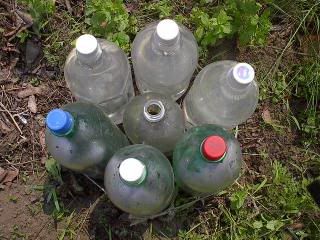A history of New Alchemy Institute. Here is the core of their natural systems designs.
_A Safe and Sustainable World: The Promise of Ecological Design_ by Nancy Jack Todd
Washington: Island Press, 2005
ISBN 1-55963-778-1
http://search.barnesandnoble.com/booksearch/isbnInquiry.asp?userid=fz1mCrlAEn&isbn=1559637781&itm=1(82-83) The living world remained our conceptual model for the architecture of the bioshelters. Evolution is continuous, dynamic, and highly adaptive. As John was wont to point out, the Laws of Thermodynamics determine that there is a progressive deterioration in the quality of energy, but living forms create spatial form and morphic order. In defiance of entropy, energy can be harnessed to work on the side of life - which is precisely what we were trying to do.
(190) A Gaian worldview holds all life to be a sacred ecology in which humankind serves as steward.
(155) Gaia knows what she is doing, and our best bet is to get better at playing junior partner in the overall scheme of things.
(142) We had, in our experiments in applied Gaia, decoded some of the elements for healing both people and the planet and had helped to give the world what Gregory Bateson had called a "paradigm with a future."
(162-163) Twelve principles fundamental to the practice of ecological design:
1. Geological and mineral diversity must be present to evolve the biological responsiveness of rich soils.
2. Nutrient reservoirs are essential to keep such essentials as nitrogen, phosphorus, and potassium available or the pants.
3. Steep gradients between subcomponents must be engineered into the system to enable the biological elements to evolve rapidly to assist in the breakdown of toxic materials.
4. High rates of exchange must be created by maximizing surface areas that house the bacteria that determine the metabolism of the system and facilitate treatment.
5. Periodic and random pulsed exchanges improve performance. Just as random perturbations foster resilience in nature. in living technologies altering water flow creates self-organization in the system.
6. Cellular design is the structural model as it is in nature where cells are the organizing unit. Expansion of system should also use a cellular model, as in increasing the number of tanks.
7. A law of the minimum must be incorporated. At least three ecosystems such as a marsh, a pond, and a terrestrial area are needed to perform the assigned function and maintain overall stability.
8. Microbial communities must be introduced periodically from the natural world to maintain diversity and facilitate evolutionary processes.
9. Photosynthetic foundations are essential as oxygen-producing plants foster ecosystems that require less energy, aeration, and chemical management.
10. Phylogenetic diversity must be encouraged as a range of aquatic animals from the unicellular to snails to fish are as essential to the evolution and self-maintenance of the system as the plants.
11. Sequenced and repeated seedings are part of maintenance as a self-contained system cannot be isolated but must be interlinked through gaseous, nutrient, mineral, and biological pathways to the external environment.
12. Ecological design should reflect the macrocosmos in the microcosmos, representing the natural world miniaturized and reflecting its proportions, as in terrestrial to oceanic and aquatic areas.
(183) This approach to watershed restoration involves the following:
1. Modifying hydrological cycles on a microscale.
2. Working first upstream then downstream in the watershed,
3. Developing many local points of intervention.
4. Allowing local topography, including buildings, parking lots, and roadways, to direct design.
5. Employing natural systems engineering.
6. Incorporating organisms such as fungi, mosses, and higher plants to sequester metals, bind phosphorus, and destroy pathogens or to break down organic compounds, including petroleum-based products.
